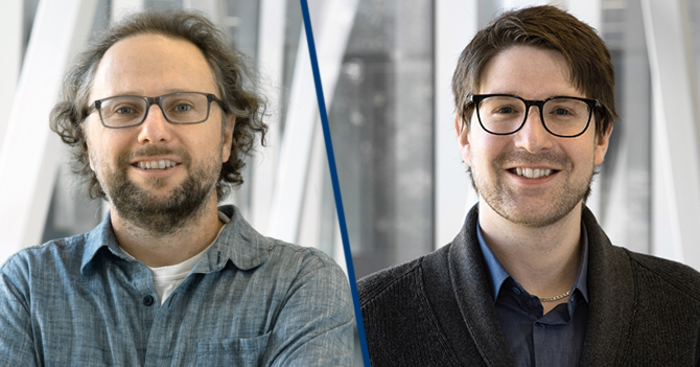In a study published in Nucleic Acids Research, the team of cancer researcher Francis Rodier, an Université de Montréal professor, shows for the first time that cellular senescence, which occurs when aging cells stop dividing, is caused by irreversible damage to the genome rather than simply by telomere erosion.

Credit: CHUM (2021)
In a study published in Nucleic Acids Research, the team of cancer researcher Francis Rodier, an Université de Montréal professor, shows for the first time that cellular senescence, which occurs when aging cells stop dividing, is caused by irreversible damage to the genome rather than simply by telomere erosion.
This discovery goes against the scientific model most widely adopted in the last 15 years, which is based on one principle: telomeres, caps located at the ends of chromosomes whose purpose is to protect genetic information, erode with each cell division. When they get too short, they tell the cell to stop dividing, thus preventing damage to its DNA. Made dormant, the cell enters senescence.
For this model to be valid, the inactivation of a single telomere should be sufficient to activate the senescence program. Rodier’s laboratory and many others had already observed that several dysfunctional telomeres were necessary.
“What’s most surprising is that, before really entering senescence, the cells divide one last time,” said Rodier. “In fact, the cell division caused by telomere dysfunction is so unstable that it ends up creating genetic defects. Contrary to what was believed, senescent cells have an abnormal genome. That’s what we show in our study.”
Snapshots of the life of a cell
To achieve such results, Rodier’s research team was able to count on state-of-the-art imaging equipment funded by the Institut du cancer de Montréal.
“Genetically, we were able to reproduce the phenomenon of cellular aging in the laboratory and ensured that all the telomeres of a population of cells became dysfunctional,” said PhD student Marc-Alexandre Olivier, co-first author of the study with former colleague Sabrina Ghadaouia, currently pursuing postdoctoral studies in England. “With our equipment, we then observed in real time what was happening inside each single cell.”
With time, senescent cells build up in the body and are responsible for the development of diseases such as cancer. This study, therefore, opens up new research opportunities.
For example, could telomeres be repaired prior to the senescence phase, thereby preventing cellular aging and genomic instability? The scientific community has been debating this potential cellular rejuvenation for several years now. Nevertheless, these emerging therapeutic approaches still need fine-tuning.
— 30 —
About the study
“Homologous recombination-mediated irreversible genome damage underlies telomere-induced senescence,” by Sabrina Ghadaouia, Marc-Alexandre Olivier and their colleagues, was published Nov. 2, 2021, in Nucleic Acids Research. The study was funded by the Institut du cancer de Montréal, Université de Montréal and the Canadian Institutes of Health Research.
About the CRCHUM
The University of Montreal Hospital Research Centre (CRCHUM) is one of North America’s leading hospital research centres. It strives to improve adult health through a research continuum covering such disciplines as the fundamental sciences, clinical research and public health. Over 2,300 people work at the CRCHUM, including more than 500 researchers and more than 520 graduate students.chumontreal.qc.ca/crchum
About Université de Montréal
Deeply rooted in Montreal and dedicated to its international mission, Université de Montréal is one of the top universities in the French-speaking world. Founded in 1878, Université de Montréal today has 13 faculties and schools, and together with its two affiliated schools, HEC Montréal and Polytechnique Montréal, constitutes the largest centre of higher education and research in Québec and one of the major centres in North America. It brings together 2,400 professors and researchers and has more than 67,000 students. umontreal.ca
Journal
Nucleic Acids Research
DOI
10.1093/nar/gkab965
Method of Research
Experimental study
Subject of Research
Cells
Article Title
Homologous recombination-mediated irreversible genome damage underlies telomere-induced senescence
Article Publication Date
2-Nov-2021
COI Statement
None declared




